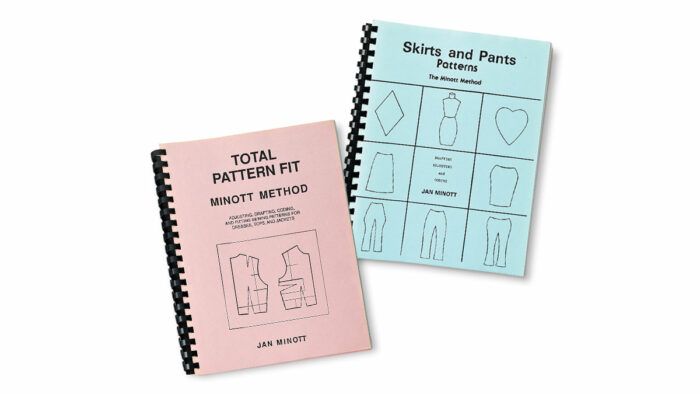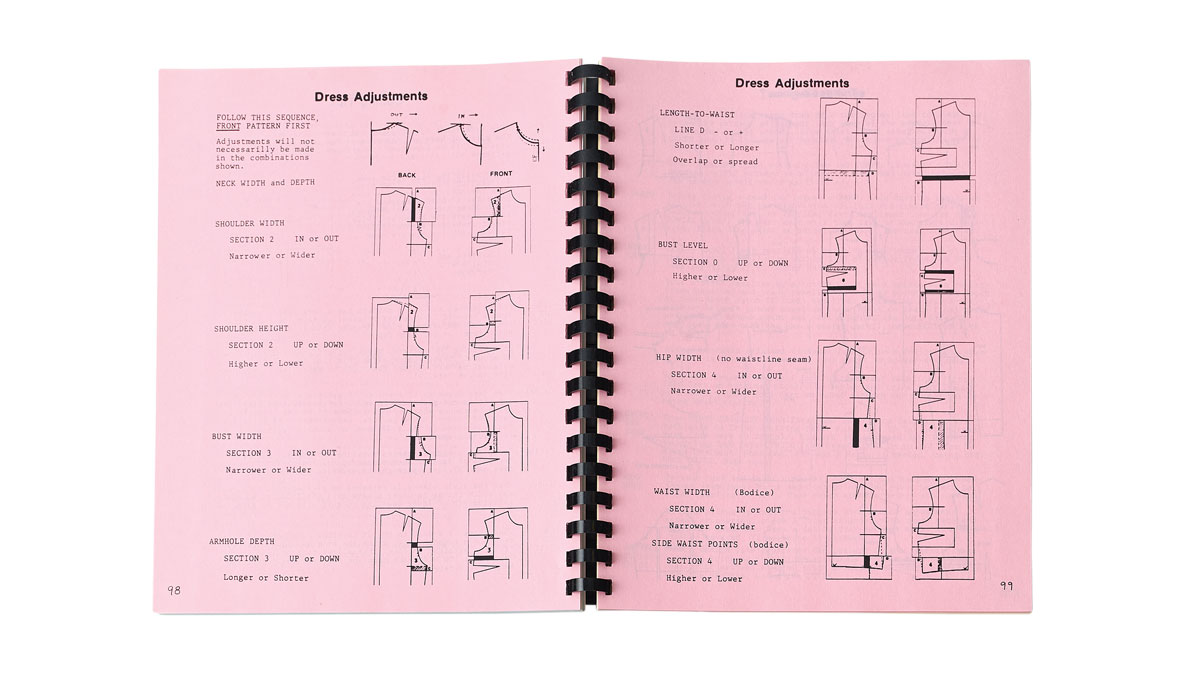
Q: About 20 years ago, I read about a fitting system called the Minott Method. What exactly is this, and what are its benefits? Are the materials for using this approach still around anywhere?
—Genevieve Dixon, Sherman Oaks, California
A: Sewing instructor Ryliss Bod, founder of the Sewing and Design School in Tacoma, Washington, gives us an overview of the Minott Method: The late Jan Minott was an instructor at the University of California Los Angeles Extension Division who developed and self-published a fitting method. Her spiral-bound volumes on pants and skirts, and tops, jackets, and dresses came out in the 1990s and were popular with home sewers seeking a comprehensive approach to fitting commercial patterns.
If you need to alter patterns for fit and don’t have a sewing instructor or seamstress friend nearby, Jan’s Total Pattern Fit (1991) and Skirts and Pants Patterns (1992) will guide you, step-by-step, to perfectly adjusted patterns. In my opinion, Jan’s books illustrate the easiest DIY pattern alteration methods. Throughout my career, I have used these books to teach my sewing students. This fit system works on all patterns, from the well-known brands— McCalls, Vogue, Butterick, and Simplicity—through the gamut of independent brands.
Jan developed the Minott Method in the 1970s while working as a sewing instructor. She based her fitting technique on her adult students’ figures. Her approach is logical and based on empirical data.
Jan’s approach works with adjustment lines in each place where you may need to alter your patterns. In Total Pattern Fit, the adjustment lines are provided for length and width, from shoulder to bust to hem, including the armholes and sleeves. Skirts and Pants identifies six distinctive hip shapes. Also covered are the fit implications of posture, waistline depth, crotch depth, and body asymmetry.
To alter a pattern, you cut along the adjustment lines to slide the pattern sections up or down, and in or out, to accommodate your measurements. Jan defines the correct adjustment sequence, illustrates poor fit in wrinkle charts, and explains how to fit a test garment, or muslin. These steps work with any commercial pattern. There is also a section on drafting your own basic patterns.

What takes Jan’s method one step further is her coding system: After you have properly fitted the basic (or sloper) pattern from a commercial pattern company, you record all the fit changes you made to it by “writing a code.” You can then use this code to alter any pattern that was derived from that sloper. This ensures that the garment fits and includes the intended design ease for the specific style you are making. The only changes you make are for personal size and shape.
This can be a benefit for those who need a size that is above or below the range of a style pattern. For example, if you need a size 20 and the pattern ends at size 16, you can write a code for the size 16 that adjusts the pattern to fit a size 20.
You can purchase Jan’s books as digital downloads or on a USB flash drive (SewingandDesignSchool.com). Even though I have successfully drafted patterns that fit me well, when it comes to altering commercial patterns, for myself or my students, I am faster and on target using Jan Minott’s method.































I sure wish these books were still available. Are there any copies we could copy?
Hi! I'm glad you asked that question. The information for ordering these books was inadvertently left out of the post when it was originally published. I've added it in the final paragraph above.
I have used the books myself for fitting guidance and they are a treasure trove of information. It's worth reading them through quickly to discover what's inside, then refer back to the relevant sections for specific fitting diagnoses and solutions.
Carol Fresia, Threads Senior Technical Editor
I have both of Jan's books and while they are a great resource they are VERY technical and not for the inexperienced stitcher IMHO. I am a professional patternmaking and even I got bogged down in the detail. My eyes began glazing over very early in the books. Maybe because a lot of the information wasn't new to me, maybe it needs a revamp to make it more user friendly especially in this age of technology where time is at a premium and visual learning is preferred. For the collector :)